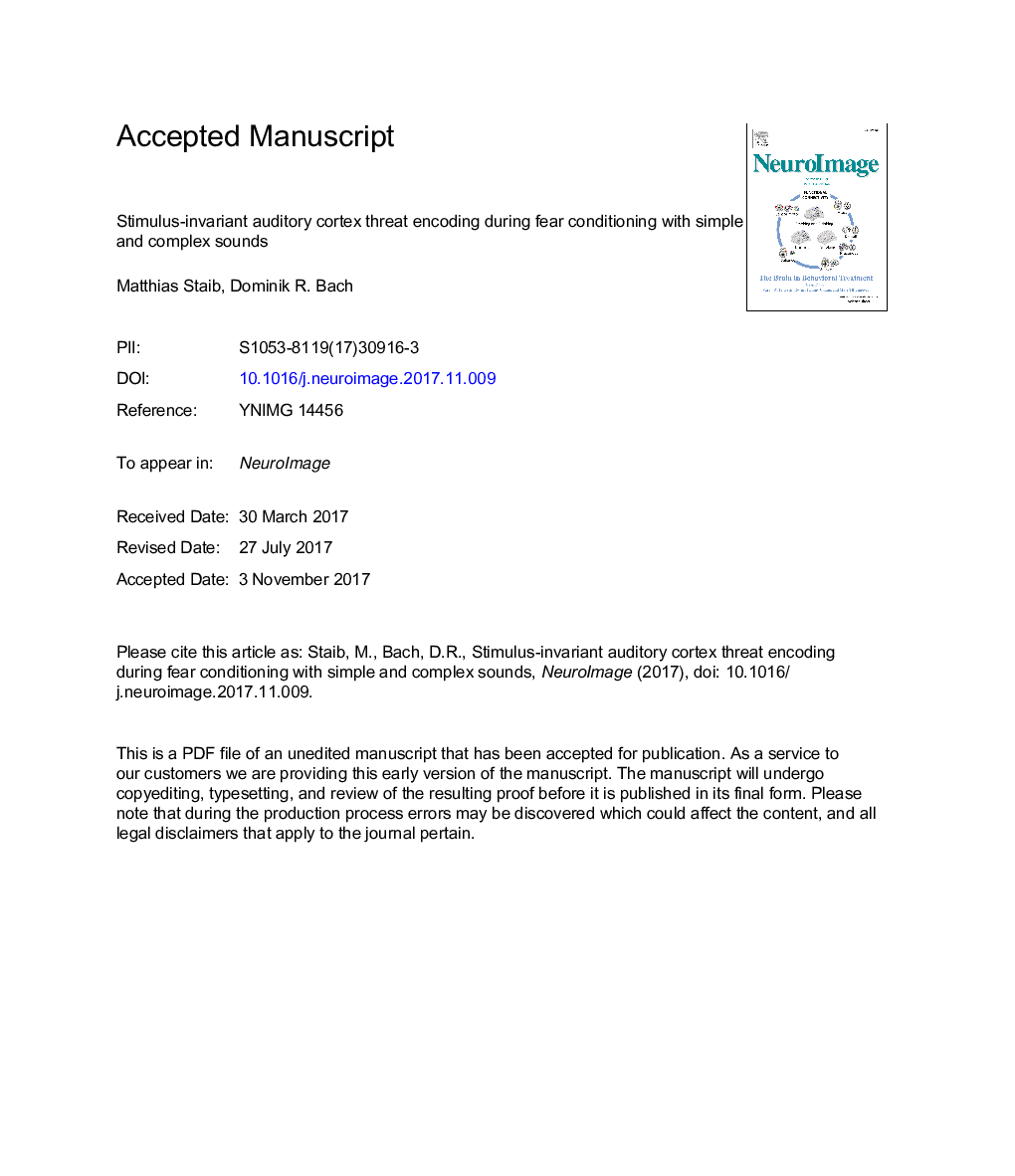| کد مقاله | کد نشریه | سال انتشار | مقاله انگلیسی | نسخه تمام متن |
|---|---|---|---|---|
| 8687363 | 1580844 | 2018 | 36 صفحه PDF | دانلود رایگان |
عنوان انگلیسی مقاله ISI
Stimulus-invariant auditory cortex threat encoding during fear conditioning with simple and complex sounds
ترجمه فارسی عنوان
تهدید محرک قارچی ناشی از تهدید در زمان ترساندن با صداهای ساده و پیچیده
دانلود مقاله + سفارش ترجمه
دانلود مقاله ISI انگلیسی
رایگان برای ایرانیان
کلمات کلیدی
موضوعات مرتبط
علوم زیستی و بیوفناوری
علم عصب شناسی
علوم اعصاب شناختی
چکیده انگلیسی
Learning to predict threat depends on amygdala plasticity and does not require auditory cortex (ACX) when threat predictors (conditioned stimuli, CS) are simple sine tones. However, ACX is required in rodents to learn from some naturally occurring CS. Yet, the precise function of ACX, and whether it differs for different CS types, is unknown. Here, we address how ACX encodes threat predictions during human fear conditioning using functional magnetic resonance imaging (fMRI) with multivariate pattern analysis. As in previous rodent work, CS+ and CS- were defined either by direction of frequency modulation (complex) or by frequency of pure tones (simple). In an instructed non-reinforcement context, different sets of simple and complex sounds were always presented without reinforcement (neutral sounds, NS). Threat encoding was measured by separation of fMRI response patterns induced by CS+/CS-, or similar NS1/NS2 pairs. We found that fMRI patterns in Heschl's gyrus encoded threat prediction over and above encoding the physical stimulus features also present in NS, i.e. CS+/CS- could be separated better than NS1/NS2. This was the case both for simple and complex CS. Furthermore, cross-prediction demonstrated that threat representations were similar for simple and complex CS, and thus unlikely to emerge from stimulus-specific top-down, or learning-induced, receptive field plasticity. Searchlight analysis across the entire ACX demonstrated further threat representations in a region including BA22 and BA42. However, in this region, patterns were distinct for simple and complex sounds, and could thus potentially arise from receptive field plasticity. Strikingly, across participants, individual size of Heschl's gyrus predicted strength of fear learning for complex sounds. Overall, our findings suggest that ACX represents threat predictions, and that Heschl's gyrus contains a threat representation that is invariant across physical stimulus categories.
ناشر
Database: Elsevier - ScienceDirect (ساینس دایرکت)
Journal: NeuroImage - Volume 166, 1 February 2018, Pages 276-284
Journal: NeuroImage - Volume 166, 1 February 2018, Pages 276-284
نویسندگان
Matthias Staib, Dominik R. Bach,
